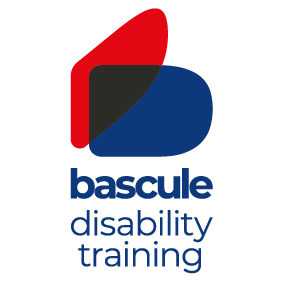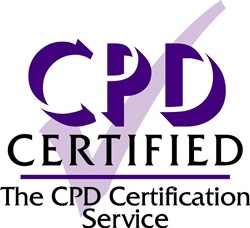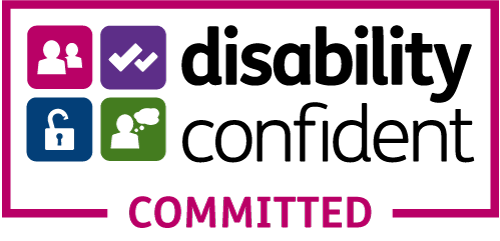Understanding and Combating Disability Microaggressions

Microaggressions aren’t loud, or blatant- they are subtle, indirect, and quite often unintentional- which is why they can be incredibly difficult to identify and even trickier to resolve. And, unlike a straightforward statement, a microaggression can even appear to be an innocent action, behaviour or comment.
To make it even more difficult to navigate, this behaviour can rear its head in a whole plethora of different forms. From non-verbal actions (such as rolling your eyes, or avoiding sitting next to someone), to verbal comments such as having ‘banter’, asking personal questions or even giving someone a ‘complement’. Whether intentional or unintentional, these behaviours send extremely negative messages to people within all marginalised groups.
Whilst ‘micro’ may imply that the impact of these statements is small, experts have compared microaggressions to having thousands of very small cuts or having hundreds of mosquito bites, in that you could endure one, but after a multitude, the pain becomes intolerable. Over time, exposure to this behaviour can be very frustrating, harmful, derogatory and have a detrimental impact on a person’s wellbeing, mental health and productivity.
So, what are microaggressions?
The term "microaggressions" was first introduced in the 1970s by Chester Pierce, a psychiatrist at Harvard Medical School, to describe the subtle, often unconscious insults and dismissive behaviours he observed between white students and African American students.
People in all protected characteristics will be familiar with the behaviour, but in context of disability- let’s look at some of the most common examples of microaggressions.
Patronising tones- “You can do that all on your own then?”
Back handed comments- “You are such an inspiration.” or “You are so resilient!”- or “You seem so normal to me!”
Privacy denial- “Oh wow- what happened to you?” – or “Is it difficult for you to go to the toilet?”
Inappropriate, belittling statements: “Everyone gets depressed from time to time though, don’t they?”- or “That’s odd you seemed fine yesterday.”
Forced help – For example, moving someone’s wheelchair without consent, or giving help to someone without asking.
Avoidance and exclusion- For example, not speaking or interacting with someone, not inviting a person to an event or occasion, choosing a venue that is not accessible – or saying, “I didn’t invite you as I thought you wouldn’t be able to participate”.
Assuming someone is suffering- “I could never go through what you’ve been through” or “I don’t know how you do it, you poor thing.”
These are just a few common examples- of course, there are a whole multitude of different kinds of microaggressions.
Now, you might read those and think that these kinds of faux pas wouldn’t happen too often, but you would be wrong. In actual fact, in a survey in November 2024, it was found that, 41% of respondents say they have experienced either microaggressions, harassment and/or bullying at work over the past 12 months.
What’s more- around half (52%) of these non-inclusive behaviours were formally reported to their employer. A third of those who did not formally report their experience to their employer worried that the behaviour would worsen if it were reported and 29% said they thought that their complaint would not be taken seriously.
So how do we change all of this?
As with everything, the first place to begin is by changing staff perception of disability, educating and making them aware, developing understanding and empathy.
Creating a training strategy, that targets all teams, for all staff across all levels of seniority, is advisable (Bascule can help you to do this). The training should specifically address etiquette, language, hidden disabilities and other areas that will help staff to be able to communicate more appropriately. This would hopefully make staff more aware of the way in which they conduct themselves around their colleagues.
This training could specifically address microaggressions immediately allowing them to consider their own behaviour and be conscious of the comments they are making. This paired with having a stronger understanding of disability will make it a lot less likely for staff to make clumsy, insensitive comments.
After this, you could consider implementing unconscious bias training (read our latest article on HR News for more on this), so staff are further aware of the fact that they may be making inaccurate assumptions influenced by past experiences, cultural norms, media portrayals, and societal conditioning.
Open dialogue
Addressing silence and underreporting requires cultivating a culture of openness and support. By fostering an environment where employees feel completely safe sharing experiences of negative behaviour, organisations can encourage more individuals to report microaggressions. This can be achieved through targeted manager training that emphasises the importance of regular staff check-ins.
Clear policies should reinforce a zero-tolerance approach to bullying, alongside the implementation of straightforward and accessible reporting procedures, that can be anonymous systems if there is any fear around reporting. Managers must also lead by example, promoting inclusive language and etiquette, recognising biases, and actively rejecting the act of micro-aggressive behaviours.
Staff empowerment
Now, if you consider how subtle microaggressions can be, there can often be a tolerance from other staff, and when a person from a marginalised group confides in a colleague, they can often receive responses such as:
“Oh, just brush it off” “They don’t mean it” “Just ignore them” “Don’t listen to them” “It’s just their sense of humour” or “Oh, he’s always been like that”.
However, if we create a more inclusive environment, educate staff, reinforce zero tolerance policies, and openly educate workforces on what microaggressions are, there is a good chance other staff members will call out behaviours themselves. Open and safe dialogue is the way to solve all of these problems.
Through the development of awareness and understanding, by creating changes in our culture, colleagues will gain the confidence to speak up, whilst pointing out that certain behaviours do not have to be tolerated. After confronting these issues staff can work together to dismantle the barriers that perpetuate them.
CHRIS JAY, MANAGING DIRECTOR, BASCULE DISABILITY TRAINING
If you would like to develop a plan to create a more inclusive culture through Bascule Disability’s Training – contact us today on info@bascule.com or call 0330 3800662.



